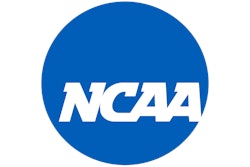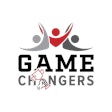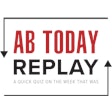|
Copyright 2013 The Post and Courier All Rights Reserved Post & Courier (Charleston, SC) |
|
October 8, 2013 Tuesday
|
|
04,D; Pg. 1
|
|
1117 words
|
| DEEP INTO SWIMMING |
|
David Quick; [email protected]
|
|
October is not the time people typically think about the need for children to take swimming lessons. Focus tends to tilt toward football and other team sports, as well as the approach of Halloween. But one local organization is deep into swimming lessons right now. Lowcountry Aquatic Project Swimming, or LAPS, is a project of the locally based Logan Rutledge Foundation, which turned its focus toward teaching children swimming and water safety after the community experienced a series of drownings, notably of African-American children, in the past decade. LAPS uses Swim Lessons University curriculum to teach young children how to swim sufficiently enough to save themselves. That means taking more than just a few lessons in the summer. This school year, LAPS expects to provide 1,500 kindergartners and first-graders from 17 Title I schools in the Charleston County School District. Each child will get 16 swimming lessons, eight in the fall semester and eight in the spring semesters, by the same teacher. The student-teacher ratio is no more than 4-to-1 and each lesson lasts 30 minutes. Organizers say not a minute is wasted. We re going to get the most out of those 30 minutes, says LAPS Director Shannon Walsh O Brien, a retired teacher with 29 years of service in the school district. In the schools, we call it bell-to-bell, from minute one to minute 30. A perfect match O Brien collaborated with Mark Rutledge, the founder of the Logan Rutledge Foundation and a long-time swimming buddy in the local masters swimming program. They both were among a core group of people, brought together by School District Superintendent Nancy McGinley after a drowning in the spring of 2009. Mark and I always knew that we wanted to teach less-privileged children children who haven t had access to water for one reason or another and haven t learned how to swim, says O Brien. As a former teacher, I knew we needed less children per teacher to have the biggest bang for our buck. Rutledge, who founded the Lowcountry Splash open0water swim to help fund the foundation, wanted to use the money from the 2.4-mile swim to help, while O Brien could offer her time and expertise in both education and swimming. Swim curriculum O Brien scoured over a variety of swimming programs and decided on Swim Lesson University, developed by James Reiser, a former professor of aquatics at the University of South Carolina for 12 years. Among Reiser s awards are USA Swimming s Adolph Kiefer Water Safety Person of the Year. O Brien says the program provides teachers with lesson plans, has distinct wordings and a means of tracking the progress of each student. When a student masters a component of swimming, such as a front kick, a star is punched on a waterproof bracelet and the skill is documented. In other words, a child s progress in learning to swim is tracked and quantified, much like passing a grade. Ultimately, Rutledge wants to track participants as they progress through high school and college to see how many pursue swimming in some way, whether being lifeguards, competing on swim teams and even getting swimming scholarships. Meanwhile, LAPS teachers are certified by Swim Lessons University and are Red Cross-certified in first aid and CPR. Another key component of the program, O Brien says, is that the teachers are paid $10 an hour. While that s not much more than a lifeguard, the pay helps vest the teachers in the work that certainly is more charitable than profitable in nature. The importance of being paid is that you keep the consistency and continuity of the teachers and you can depend on them to be at work. We all know volunteers are wonderful, but if they can t make it to a class, it hurts the program, says O Brien. Pay for quality Twenty teachers providing eight, 30-minute classes to 1,500 teachers adds up. And wages aren t the only expense. LAPS provides all the supplies and also must pay for the bus transportation from the schools to the pool and back. The latter makes up 15 percent to 20 percent of the cost. In all, Rutledge says the budget for this school year s program is $120,000 and only two-thirds of it is raised. Ultimately, O Brien and Rutledge envision not limiting LAPS to Title I schools. They would like to see it provided to all 41 elementary schools in the district and potentially serve as a model program for the entire state. Fortunately, LAPS is getting strong support from the recreation departments of the cities of Charleston and North Charleston, which allow free use of the Martin Luther King Jr. and Danny Jones pools, respectively, and the Charleston County Parks and Recreation Commission with its portable pool. (LAPS trained PRC staffers to teach lessons.) Wellness factor Another reason to have LAPS branch out is the benefit other than water safety. Charleston County School District Physical Education Coordinator Dave Spurlock says LAPS dovetails with the district s effort to enhance physical fitness and wellness. These types of programs are exactly what we re looking for to run in conjunction with our physical education programs, says Spurlock, who has gained a national reputation for trumpeting physical fitness and its positive impact on academics and behavior. It (LAPS) gives kids an opportunity not only to learn to swim and be safe around the water, but also gives them a good opportunity to get some exercise, get out into the community and go on a field trip. Spurlock adds, too, that swimming lessons go beyond learning to swim but are lessons in communication and cooperation. Part of the swimming curriculum includes classroom work in writing and drawing. Tonia Smith, a teacher at Charleston Progressive Academy, says her students, most of whom did not know how to swim when they started, have enjoyed the program immensely. They look forward to it every week, says Smith, whose class was on lesson No. 7 of the eight for the fall last week. I ve also had some parents come out to watch and they re enjoying it, too. Ultimately, O Brien hopes that by providing the young children swimming lessons, their parents and families will be more inclined to take lessons and consider water activities in the future. Our No. 1 goal is to see children that are safe in the water. If they were to fall in the water that surrounds them everywhere in the Lowcountry, we want them to get themselves back to safety, says O Brien. Second, I want families with children to come to pools, exercise and understand that they have so many water activities in our community that they can enjoy. And finally, I want to grow the sport of swimming and have more diversity in the sport. Reach David Quick at 937-5516 or dquick@postand courier.com. |
|
October 8, 2013
|
Terms and Conditions Privacy Policy



































